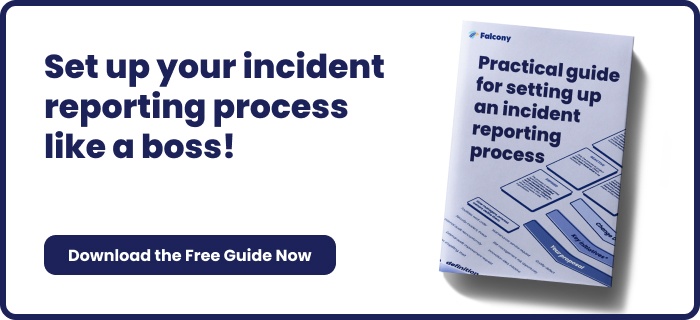How To Setup An Effective Nonconformity Process
Nonconformities are the input of the Corrective Action and Preventive Action (CAPA) processes. A nonconformity must be clearly and correctly identified to adequately resolve the issue and prevent its recurrence.
Below we will briefly explore how to write a nonconformity report, which will lead to the steps of Corrective Action and Preventive Action (CAPA).
How to Write a Nonconformity Report
Once you identify a nonconformity, you need to draft a report. Here, you will need to identify the error type and who the error will affect the most.
In a nutshell, the report needs to answer the questions:
- What is the problem and is there a history of this problem?
- Where did the error take place?
- When did it happen and when was it reported?
- How large and how frequent is the problem?
- How can the error be measured?
The answers to these questions are helpful as they will help you understand the issue, and its root cause better for future prevention.
The Importance of Accuracy, Precision, Conciseness, and Completeness
Nonconformity reports need to include accurate and precise objective evidence that a requirement has not been met. It is imperative that the evidence and the cited requirement clearly match up.
The report should be concise and dense with information. Once you have finished your report, read through it, and remove any words that don’t directly contribute to the accuracy and precision of the report.
In terms of completeness, the report must be able to stand alone. It must hold all the necessary information an institution might need to initiate CAPA.
The Structure of a Nonconformity Report
The standard report should include the following:
- The cited requirement that was not met. This is usually a management system standard (e.g. ISO 9001 or ISO 14001) or a specific procedure or work instruction.
- The evidence of the nonconformity. Evidence should be accurate, precise, and cited in great detail. Be sure to only include evidence that is directly relevant to the requirement failure in question.
- The final statement of nonconformance. This is a brief sentence that clearly links the evidence to the failed requirement.
The benefit of this structure is that it gives you trackable data, informs you of compliance with the standards in question, and enables you to understand what actions you need to take in order to prevent the discovered issues going forward.
What to Avoid
Do not include any strong opinions as to the cause of the error. Do not include any opinions regarding the severity of the error and avoid suggesting any corrective actions.
The nonconformity report is purely a record of the error and evidence of that error. Any causes and solutions will be explored during CAPA.
Often, reports do not provide adequately detailed evidence. Be certain that your report contains detailed evidence supporting the non-compliance. On the flip side, however, make sure you don’t overdo it and include irrelevant details.
Resolving a Nonconformity
Once you have an accurate report, you would use it to initiate CAPA and follow the usual steps associated with these processes including:
- Assembling an appropriate response/review team
- Finding the root cause of the problem
- Taking Corrective Action/Preventive Action
- Monitoring and measuring post-CAPA to ensure efficacy
Once this is done you can start resolving the nonconformities methodically and initiate the first steps of the CAPA process.
Final Thoughts
It is essential that a nonconformity is correctly identified and precisely reported on if CAPA is to proceed effectively.
So, be sure that your nonconformity report is of a high standard!
To make sure that all the nonconformities are tracked in the most optimal way possible it's recommended to have a smart and digital system in place. A system like this will not only be able to help you track the issues, but also help internal communications around them as well.
Are you looking for a tool to monitor nonconformities or any other issues in your organisation? Falcony | Observe ticks all the boxes for issue management, is easy to customise, enables real dialogue and is a lot more.
We are building the world's first operational involvement platform. Our mission is to make the process of finding, sharing, fixing and learning from issues and observations as easy as thinking about them and as rewarding as being remembered for them.
By doing this, we are making work more meaningful for all parties involved.
More information at falcony.io.

Related posts
How To Help When An Incident Happens
Incident reporting is an essential part of a well-functioning, safe work environment. But reports...
How to Increase the Number of Incidents Reported?
Safety and Quality Managers often face the problem of not receiving enough incident observations....
15 Issues And Incidents All Ports Need To Record To Increase Involvement
Regular incident reports at ports will ensure faster issue resolution times. This will prevent...





